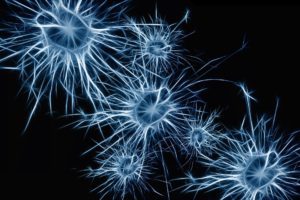- Calls to this hotline are currently being directed to Within Health, Fay or Eating Disorder Solutions
- Representatives are standing by 24/7 to help answer your questions
- All calls are confidential and HIPAA compliant
- There is no obligation or cost to call
- Eating Disorder Hope does not receive any commissions or fees dependent upon which provider you select
- Additional treatment providers are located on our directory or samhsa.gov
Health Anxiety: The Interplay Between the Mind and Body

There is nothing quite like a mysterious new illness, turned pandemic, that can stir up anxiety about our health in even the most tranquil of us. Still, beyond the amplified worries of COVID-19, health anxiety, a continuous preoccupation of the state of the body, vulnerability to illness, and the possibility that one could fall victim to a serious disease is more common than is realized.
Health Anxiety and the Mind-Body Connection
Health anxiety can have an enormous impact on physical and emotional health. Interestingly, research into the overlap of the mind and body connection shows that the mind, through beliefs, emotions, and perceptions, can manifest as physical symptoms in the body.
Because traditional practices have siloed the mind and the body, this notion is not yet commonplace. Thankfully, a growing body of physicians and clinicians understand the interplay between the mind and body.
This knowledge can help us to appreciate how rumination, fixation, and anxiety regarding our health can keep us stuck in genuine bodily expressions of pain and discomfort, even when there is nothing physically wrong.
Through understanding the concept of neuropathic pain, we can understand that the body’s desire for efficiency can wire us for ongoing pain and physical symptoms after the body has healed itself. When an injury or illness is sustained, it creates a neuro pathway that signals the sensation of pain coming from that place in the body.
Why Does Health Anxiety Trigger the Mind-Body Connection?
Because pain is a danger warning signal, the brain regards it as extremely important. Fight or flight responses to these signals are natural. When the source of pain is unclear, the brain searches for causes.
With the danger signal activated, the most threatening sources are the ones we begin to plan for. Unfortunately, the inner workings of our body are not easy to discern. A combination of not feeling well and not knowing why kicks off a health anxiety cycle that can be hard to break.
The health anxiety cycle starts with the detection of a sensation. Next, our brains do what brains do with incoming information, which is to judge, categorize, and try to predict what will happen next. Because survival is hardwired within us, we often tend toward the worst-case scenario.
 This leads to the next step in the cycle, which is to interpret the signal as a vulnerability. The belief that we are in danger signals effects such as fear, anxiety, and at its worst, panic. Completing the loop, the bodily reaction to these emotions is strong physical sensations that produce and intensify pain, discomfort, and dysregulation. From here, the loop grows tighter and tighter as it feeds its own continuation.
This leads to the next step in the cycle, which is to interpret the signal as a vulnerability. The belief that we are in danger signals effects such as fear, anxiety, and at its worst, panic. Completing the loop, the bodily reaction to these emotions is strong physical sensations that produce and intensify pain, discomfort, and dysregulation. From here, the loop grows tighter and tighter as it feeds its own continuation.
Physicians like the late Dr. John Sarno have dedicated their careers to treating physical conditions that have emotional antecedents. In the literature, these disorders are referred to as Mind Body Syndrome, Tension Myositis Syndrome, and, most recently, Psychophysiological Disorders (PPD).
These disorders are considered after nociceptive explanations for physical sensations have been ruled out. These disorders are thought to stem from neural pathways that the body has learned and become “efficient” at running.
Individuals who have experienced adverse childhood trauma are also thought to have a higher incidence of this type of disorder, as pain pathways have developed well-worn tracks. PPDs are also thought to serve a protective function for the mind. It is hypothesized that emotional pain can be far more difficult to experience than physical pain.
For this reason, there is functionality in distracting the mind with all-encompassing physical pain and illness. This fixation does not allow time or energy to experience the underlying emotional pain that is conceptualized as the true threat.
By understanding how emotions, past experiences, and beliefs can stimulate and perpetuate physiological symptoms, we gain the knowledge to stop this cycle.
The Three Pathways
In the book, Hidden from View, Dr. Allan Abbass and Dr. Howard Schubiner document three bodily pathways that unconscious emotion can take and the resulting symptomology.
Muscle anxiety is the first path. This path has effects on muscle activation and resulting tension in the body. Results from this activation can be chronic pain, including muscle spasms, migraine, abdominal wall pain, choking sensations, and severe, persistent neck and back pain.
Smooth muscle is the second pathway that can be affected. While this pattern can also be activated by anxiety, emotion repression can be the cause as well. Repression differs from pushing emotions aside. Instead, it happens when emotions are unable to be recognized or identified.
Many of the body’s systems can be impacted by this activation, including the cardiac system. Symptoms of cardiac smooth muscle activation are felt through sensations of a tight chest, hypertension, and hypotension with loss of consciousness. Additionally, the gastrointestinal system can be impacted and expressed through Irritable Bowel Syndrome, Gastroesophageal Reflux Disease, and chronic abdominal pain.
Cognitive-perceptual disruption is the third pathway through which stress and emotion can be presented. This occurs when anxiety and repressed emotions disrupt a person’s ability to think and accurately sense.
Conversion disorders, such as blindness and deafness, where these states occur in healthy individuals with no bodily explanation for their symptoms, are thought to be caused by this pathway. Additionally, hallucinations, fainting, and pseudo-seizures can result. Less nefarious symptoms are experienced as mental “fog,” frequent confusion, and syncope.
A Cause and Effect Cycle
 Certain traits are more commonly seen in individuals diagnosed with PPD. Interestingly, there is a stark overlap in the similarities between these and the traits commonly seen in those with eating disorders. Factors like perfectionism, low self-esteem, setting strict personal rules, repression of emotion, and being overly responsible serve as traits often observed by those with eating disorders and PPD.
Certain traits are more commonly seen in individuals diagnosed with PPD. Interestingly, there is a stark overlap in the similarities between these and the traits commonly seen in those with eating disorders. Factors like perfectionism, low self-esteem, setting strict personal rules, repression of emotion, and being overly responsible serve as traits often observed by those with eating disorders and PPD.
Given that PPD and eating disorders are biopsychosocial disorders that impact and manifest through the mind and the body, it is important that those treating eating disorders have exposure to PPD as a potential compounding factor in a patient’s care conceptualization.
When it is not understood that emotions can produce these experiences, we naturally look to physical explanations. An internet search of symptoms often displays the most worrisome of causes and unwittingly reinforces anxiety and stress.
The cycle of sensation, explanation, and worry fuel one another and can become all-consuming. By understanding the natural desire to avoid emotional pain and working to acknowledge and tend to these feelings, we can reduce what is being stored and expressed as physical symptoms in the body.
Resources:
[1] Abbass, A., & Schubiner, H. (2018). Hidden from view: A clinician’s guide to psychophysiologic disorders. Pleasant Ridge, MI: Psychophysiologic press. [2] Sarno, J. E. (1999). The mindbody prescription: Healing the body, healing the pain. New York, NY: Warner Books. [3] Schubiner, H., & Betzold, M. (2019). Unlearn your pain: A 28-day process to reprogram your brain. Pleasant Ridge, MI: Mind Body Publishing.About the Author:
 Rebecca Brumm, MA, LPC, CEDS-S has a master’s degree in professional counseling from Central Michigan University. Rebecca specializes in helping people work on improving their body image and overcoming eating disorders. She is a certified Intuitive Eating Counselor, a Health at Every Size (HAES) practitioner and has served as a national health presenter for Cigna Health.
Rebecca Brumm, MA, LPC, CEDS-S has a master’s degree in professional counseling from Central Michigan University. Rebecca specializes in helping people work on improving their body image and overcoming eating disorders. She is a certified Intuitive Eating Counselor, a Health at Every Size (HAES) practitioner and has served as a national health presenter for Cigna Health.
The opinions and views of our guest contributors are shared to provide a broad perspective on eating disorders. These are not necessarily the views of Eating Disorder Hope, but an effort to offer a discussion of various issues by different concerned individuals.
We at Eating Disorder Hope understand that eating disorders result from a combination of environmental and genetic factors. If you or a loved one are suffering from an eating disorder, please know that there is hope for you, and seek immediate professional help.
Published November 10, 2020, on EatingDisorderHope.com
Reviewed & Approved on November 10, 2020, by Jacquelyn Ekern MS, LPC

The EatingDisorderHope.com editorial team comprises experienced writers, editors, and medical reviewers specializing in eating disorders, treatment, and mental and behavioral health.

